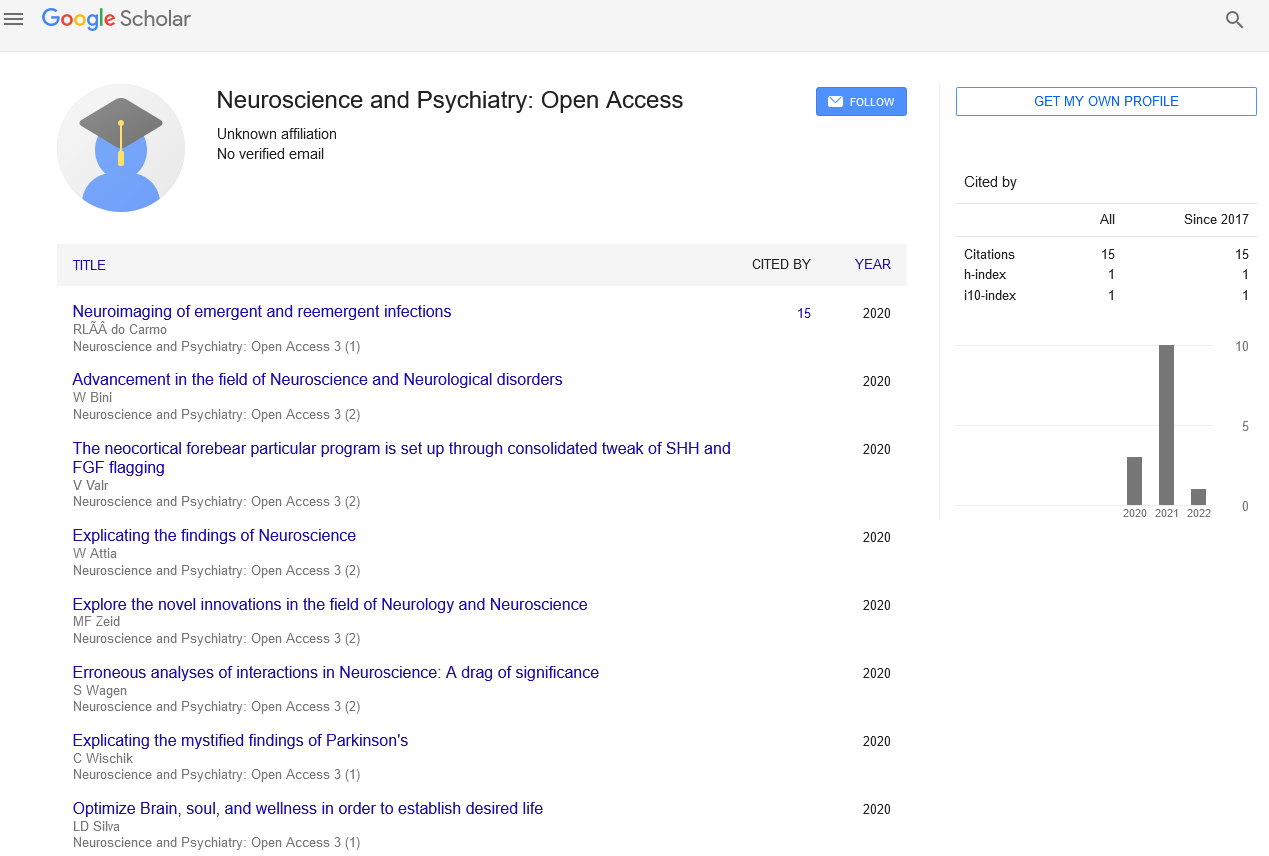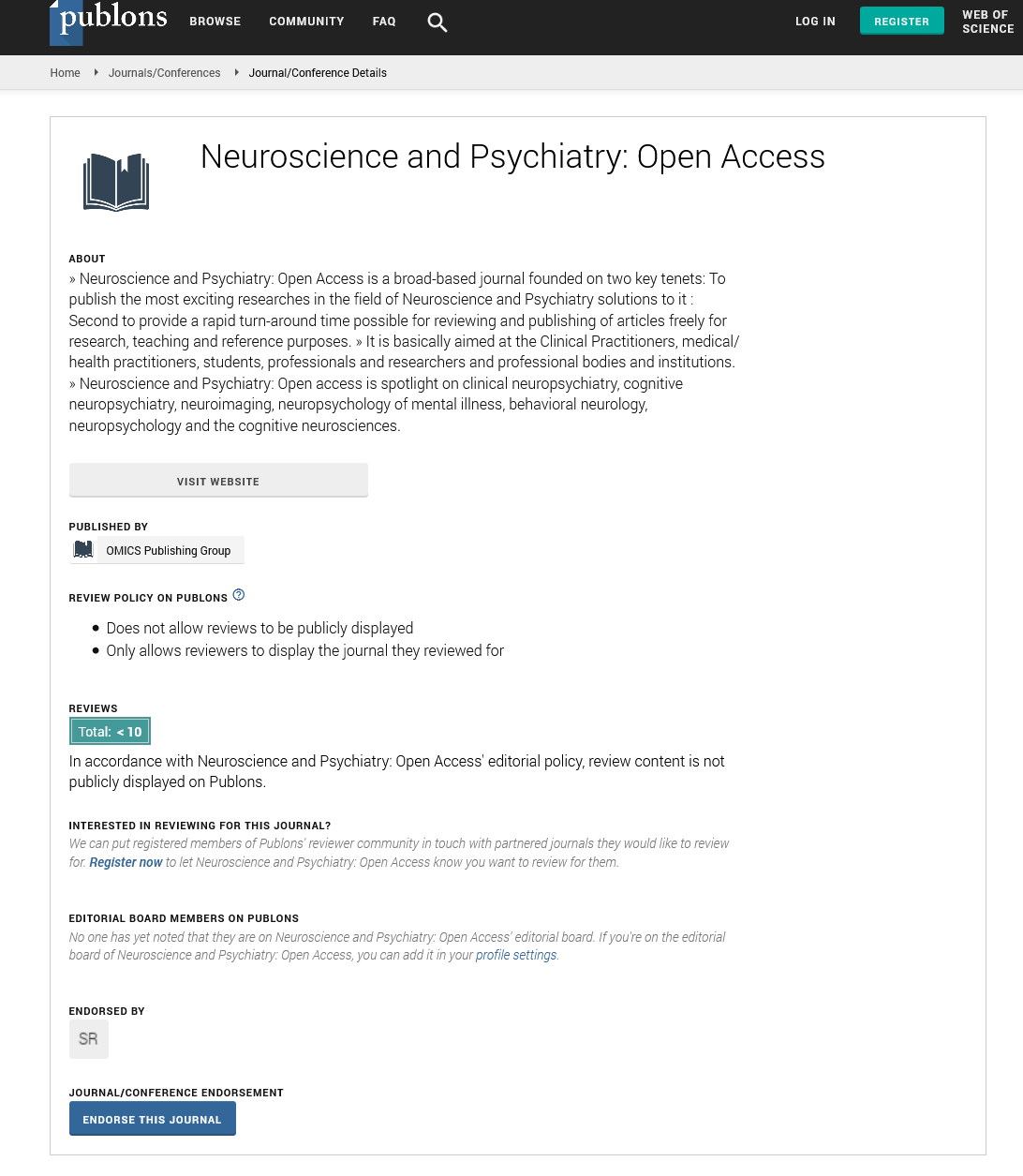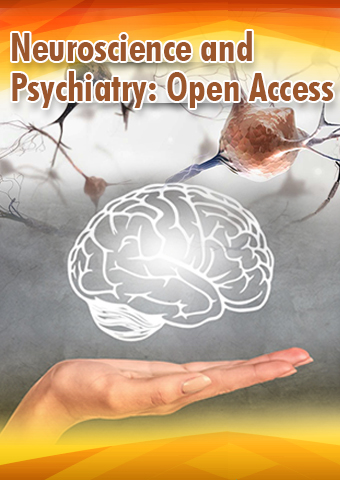Perspective - Neuroscience and Psychiatry: Open Access (2024) Volume 7, Issue 2
Safeguarding the Brain: Understanding Neuroprotection and Its Implications
- Corresponding Author:
- Timothy Michaels
Department of Neurology, NYU Langone Medical Center, New York, United States of America
E-mail: Tmich165@northwell.edu
Received: 16-02-2024, Manuscript No. NPOA-24-128842; Editor assigned: 19-02-2024, PreQC No. NPOA-24-128842 (PQ); Reviewed: 04-03-2024, QC No. NPOA-24-128842; Revised: 14-03-2024, Manuscript No. NPOA-24-128842 (R); Published: 21-03-2024, DOI: 10.47532/npoa.2024.7(2).188-190
Introduction
Neuroprotection, a term encompassing a range of strategies aimed at preserving neuronal structure and function, stands as a beacon of hope in the realm of neuroscience and neurology. With the rising prevalence of neurodegenerative diseases, strokes, and traumatic brain injuries, the quest for interventions to protect and promote the health of the brain has intensified. In this article, we delve into the concept of neuroprotection, exploring its underlying mechanisms, current strategies, and potential implications for treating neurological disorders.
Description
Understanding neuroprotection
At its core, neuroprotection seeks to mitigate the damage inflicted upon neurons by various insults, ranging from ischemia and oxidative stress to neuroinflammation and excitotoxicity. The ultimate goal is to halt or slow the progression of neuronal injury and preserve cognitive function and quality of life. Neuroprotection can be achieved through diverse mechanisms, including enhancing cellular resilience, reducing oxidative stress, modulating inflammatory responses, and promoting neuronal repair and regeneration.
Mechanisms of neuroprotection
• Cellular resilience: Neurons possess inherent mechanisms to withstand stress and maintain homeostasis in the face of adversity. Molecular chaperones, such as heat shock proteins, assist in protein folding and prevent the aggregation of misfolded proteins, a hallmark of neurodegenerative diseases. Additionally, activation of stress response pathways, such as the unfolded protein response and autophagy, enables cells to adapt to adverse conditions and promote survival.
• Antioxidant defense: Oxidative stress, resulting from an imbalance between the production of Reactive Oxygen Species (ROS) and antioxidant defenses, plays a central role in neuronal injury and neurodegeneration. Neuroprotective agents, including antioxidants like vitamin E, coenzyme Q10, and polyphenols, scavenge free radicals and bolster endogenous antioxidant systems, thereby reducing oxidative damage and preserving neuronal integrity.
• Anti-inflammatory strategies: Neuroinflammation, characterized by the activation of microglia and astrocytes and the release of pro-inflammatory cytokines and chemokines, contributes to neuronal injury in various neurological disorders. Neuroprotective interventions target inflammatory pathways, either by inhibiting the activation of immune cells or by promoting the resolution of inflammation through the release of anti-inflammatory mediators like interleukin-10 and transforming growth factor-beta.
• Excitotoxicity modulation: Excessive activation of glutamate receptors, particularly N-methyl-D-aspartate (NMDA) receptors, can lead to neuronal damage and cell death, a phenomenon known as excitotoxicity. Neuroprotective agents, such as NMDA receptor antagonists and inhibitors of glutamate release, mitigate excitotoxic neuronal injury and preserve synaptic function.
Current strategies for neuroprotection
The pursuit of neuroprotection has spurred the development of various pharmacological and non-pharmacological interventions aimed at preserving brain health and function.
• Pharmacological interventions: A plethora of pharmacological agents have been investigated for their neuroprotective potential in preclinical and clinical studies. These include small molecules targeting specific pathways implicated in neuronal injury, such as neurotrophic factors, anti-inflammatory drugs, and modulators of synaptic transmission. While some compounds have shown promise in preclinical models, translating these findings into effective therapies for human neurological disorders remains a formidable challenge.
• Lifestyle modifications: Emerging evidence suggests that lifestyle factors, including diet, exercise, sleep and cognitive stimulation, can exert profound effects on brain health and resilience. Adherence to a Mediterranean diet rich in fruits, vegetables, whole grains, and healthy fats has been associated with a reduced risk of cognitive decline and neurodegenerative diseases. Regular physical activity promotes neurogenesis, enhances synaptic plasticity, and reduces the risk of stroke and dementia. Adequate sleep is essential for neuronal repair and memory consolidation, while engaging in mentally stimulating activities preserves cognitive function and mitigates age-related cognitive decline.
• Non-invasive brain stimulation: Non-invasive brain stimulation techniques, such as Transcranial Magnetic Stimulation (TMS) and transcranial Direct Current Stimulation (tDCS), hold promise as adjunctive therapies for neuroprotection. These techniques modulate neuronal excitability and plasticity in targeted brain regions, offering potential benefits for conditions such as stroke, traumatic brain injury, and neurodegenerative diseases.
Implications for neurological disorders
The concept of neuroprotection carries profound implications for the prevention and treatment of neurological disorders across the lifespan.
• Stroke: Stroke, a leading cause of disability and mortality worldwide, results from the interruption of blood flow to the brain, leading to neuronal injury and functional impairment. Neuroprotective strategies aimed at preserving neuronal viability and promoting recovery hold great promise for improving outcomes in stroke patients. Therapeutic interventions targeting excitotoxicity, oxidative stress, inflammation, and neuroregeneration are actively being pursued in clinical trials to enhance stroke recovery and minimize disability.
• Neurodegenerative diseases: Neurodegenerative diseases, including Alzheimer’s disease, Parkinson’s disease, and amyotrophic lateral sclerosis, are characterized by progressive loss of neurons and synaptic dysfunction, leading to cognitive decline, motor impairment, and functional disability. Neuroprotective approaches targeting protein aggregation, mitochondrial dysfunction, neuroinflammation, and synaptic loss offer potential avenues for slowing disease progression and preserving cognitive and motor function in affected individuals.
• Traumatic brain injury: Traumatic Brain Injury (TBI) represents a significant public health concern, with long-term cognitive and behavioral sequelae affecting survivors. Neuroprotective strategies aimed at mitigating secondary injury cascades, including excitotoxicity, oxidative stress, neuroinflammation, and axonal damage, hold promise for improving outcomes in TBI patients. Early interventions, such as hypothermia and neuroprotective drug therapies, may limit neuronal injury and promote functional recovery following TBI.
Conclusion
Neuroprotection represents a multifaceted approach to safeguarding the brain against injury and degeneration, offering hope for the prevention and treatment of neurological disorders. By targeting diverse pathways implicated in neuronal injury and dysfunction, neuroprotective strategies aim to preserve brain health and function, thereby improving outcomes and quality of life for individuals affected by neurological diseases and injuries. As our understanding of the underlying mechanisms of neuroprotection continues to advance, so too does the potential for developing effective interventions to combat neurological disorders and promote brain resilience across the lifespan.


